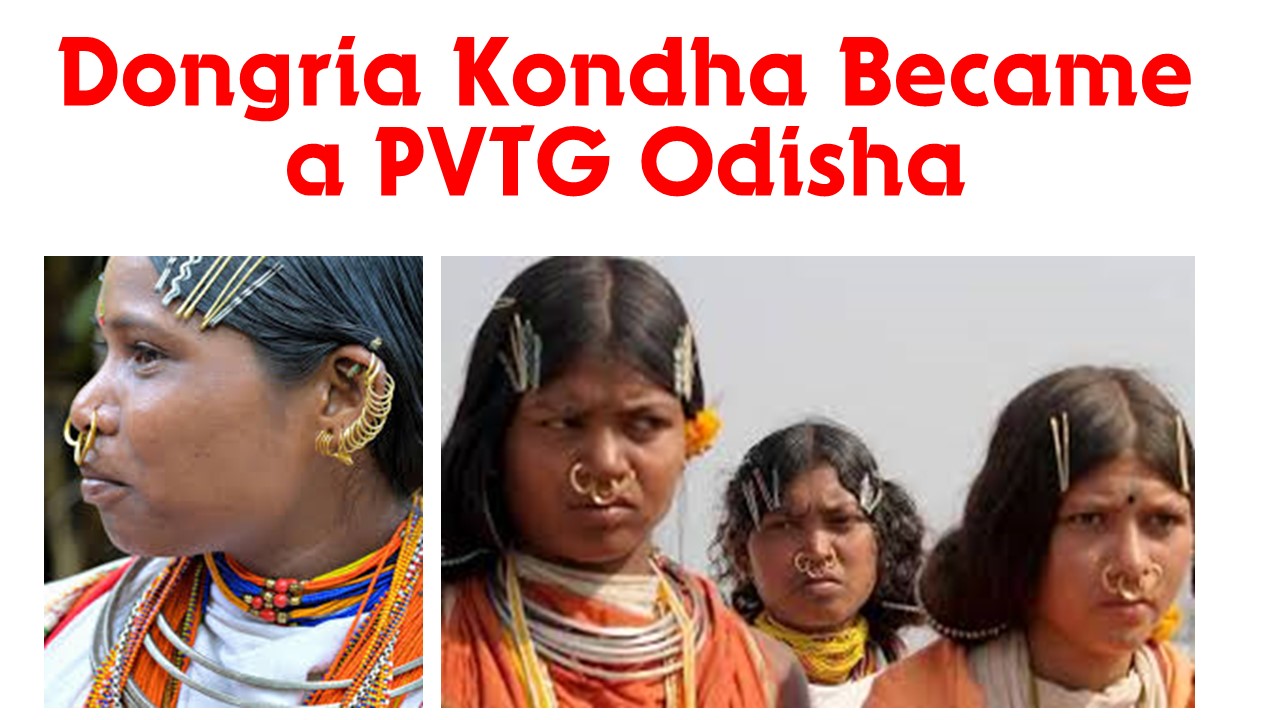
Recognizing Vulnerability: Dongria Kandha Journey to PVTG Status
The Dongria Kondh (also known as Dangaria Kandha) are an indigenous tribal community residing in the Niyamgiri Hills of Odisha, India. They are recognized as a Particularly Vulnerable Tribal Group (PVTG) and are part of the larger Kondh ethnic group.
Homeland: Niyamgiri Hills
The Dongria Kondh inhabit the Niyamgiri hill range, which spans approximately 250 km² across the Rayagada and Kalahandi districts of Odisha. This region is characterized by densely forested hills, deep gorges, and cascading streams. The highest peak, Niyam Dongar (also known as Niyamgiri), stands at 1,306 meters and is considered sacred by the tribe .
Culture and Beliefs
- Language: They primarily speak the Kui language, which belongs to the Dravidian language family and is traditionally unwritten .
- Religion: The Dongria Kondh practice a form of animism, worshipping nature and ancestral spirits. Their supreme deity is Niyam Raja, the god of the Niyamgiri Hills .
- Lifestyle: They sustain themselves through horticulture and shifting cultivation, growing crops on the hill slopes. Their deep reverence for nature is evident in their sustainable farming practices and conservation of biodiversity .
Struggle Against Mining
In the early 2000s, the Dongria Kondh faced a significant threat when Vedanta Resources planned to mine bauxite from the Niyamgiri Hills. The proposed mining project posed a risk to their sacred lands and way of life. After a prolonged legal battle and consultations with the local communities, the Indian government denied environmental clearance for the project in 2014, recognizing the tribe’s rights and the ecological importance of the region .
Art and Identity
The Dongria Kondh are known for their distinctive attire and jewelry. Both men and women adorn themselves with elaborate ornaments made of brass, iron, and aluminum. Their art often features triangular motifs representing the mountains, reflecting their close connection to the Niyamgiri Hills .
For a visual insight into the Dongria Kondh’s culture and their struggle to protect their homeland, you might find the following video informative:
The Dongria Kondh tribe of Odisha is renowned for its distinctive and culturally significant ear ornaments, which are integral to their identity and heritage.
Traditional Earring Styles
- Murma: These are small brass rings worn by both men and women. It’s customary for individuals to adorn approximately 16 of these earrings across their ears, symbolizing beauty and tribal identity.
- Nanguli: Crafted from brass, these earrings are twisted into a spiral resembling a snake. The design is not only ornamental but also holds cultural significance, reflecting the tribe’s connection to nature.
- Kiyu Murma: These are delicate rings made of gold or silver, showcasing the tribe’s craftsmanship and aesthetic sensibilities.
- Kute (Ear Bolt): Made from gold or brass, these are sturdier pieces that add to the variety of ear adornments worn by the Dongria Kondh.
Cultural Significance
The practice of wearing multiple earrings is deeply rooted in the Dongria Kondh’s cultural traditions. Each piece of jewelry is not merely decorative but serves as a marker of identity, social status, and connection to their ancestral heritage. The intricate designs and the materials used reflect the tribe’s reverence for nature and their artisanal skills passed down through generations.
For a visual representation of these traditional earrings, you might find the following image insightful:
Here’s a strong conclusion you can use for your project, article, or presentation on the Dongria Kondh (PVTG):
Conclusion
The Dongria Kondh represent one of India’s most resilient and culturally rich tribal communities. Their recognition as a Particularly Vulnerable Tribal Group (PVTG) highlights not only their socio-economic challenges but also their deep-rooted connection to nature and traditional knowledge systems. Despite pressures from industrial development and modern influences, the Dongria Kondh have shown remarkable courage in preserving their identity, sacred lands, and sustainable way of life.
Protecting communities like the Dongria Kondh is not only a matter of social justice but also essential for safeguarding India’s cultural diversity, ecological wisdom, and indigenous rights. Their story serves as a powerful reminder of the importance of respecting tribal autonomy and living in harmony with nature.
Let me know if you’d like this conclusion translated or adapted for a speech, report, or school project!
1. Who are the Dongria Kondh?
The Dongria Kondh are an indigenous tribal group living in the Niyamgiri Hills of Odisha, India. They are known for their close connection to nature, distinct cultural practices, and strong resistance to outside threats to their land
2. Why are they called a PVTG?
They are classified as a Particularly Vulnerable Tribal Group (PVTG) by the Government of India due to their:
Small population size
Geographical and social isolation
Low literacy and health levels
Dependence on forest-based livelihood
3. Where do the Dongria Kondh live?
They inhabit the Niyamgiri hill range, which spans the Rayagada and Kalahandi districts in southern Odisha.
4. What language do they speak?
They speak Kui, a Dravidian language that is primarily oral.
5. What is unique about their culture?
Deep reverence for Niyam Raja, their hill deity
Unique triangular tattoo motifs and colorful attire
Traditional horticulture and forest conservation
Elaborate earrings and body ornaments worn by both men and women
6. What are the traditional earrings worn by Dongria Kondh?
They wear many earrings, such as:
Murma (small brass rings)
Nanguli (snake-like spiral rings)
Kute (ear bolts)
These earrings symbolize beauty, identity, and heritage.
7. What threats have they faced?
The tribe gained national attention when they opposed Vedanta’s bauxite mining project, which threatened their sacred hills. Their resistance helped stop the project in 2013–2014.



